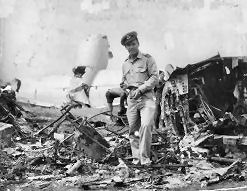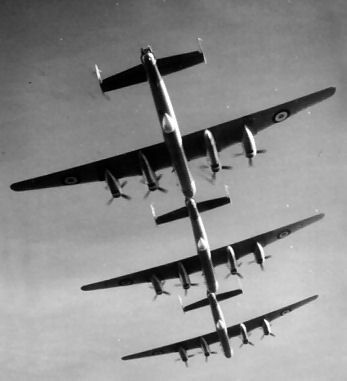|
Radschool Association Magazine - Vol 32 Page 13 |
|
Privacy Policy | Editorial Policy | Join the Association | List of Members | Contact us | Index | Links | Print this page |
|
|
|
LINCOLN TALES John Laming.
My first sight of the Avro Lincoln bomber was in April 1953, when I arrived on posting to No.10 Squadron at Townsville. The squadron was equipped with 8 Lincolns, a Dakota, a Wirraway and a Mustang.
The Commanding Officer was Wing Commander John "Handlebars" Handbury AFC, who wore a wide moustache, hence the nickname. Handbury was a charming man, with a gentle manner, who had flown Lockheed Hudsons against the Japanese in New Guinea.
After being
introduced to him in his office, the CO wanted to know what types of
aircraft I had been flying. When I told him that I had experience on
Mustangs, Vampires and Wirraways, he seemed very pleased, because
amongst the 20 Lincoln pilots at the squadron, only one had flown
Mustangs. Handbury apparently needed another endorsed pilot to fly the
squadron Mustang A68-113 on fighter affiliation (mock combat) and
gunnery
As I had not flown any multi engine aircraft, the Wing Commander explained that I would fly as second pilot on the Lincoln and Dakota for 9 months, before being checked out for local flying in command. Six months later and provided I proved reasonably competent, I would be given my own crew and operate as a squadron maritime reconnaissance captain.
Many of the squadron’s pilots, navigators, signallers and air gunners had flown over Europe during World War 2. Some wore the golden eagle badge of the Pathfinders and others wore the blue striped ribbon of the Distinguished Flying Cross. At least two pilots had flown Spitfires. In fact, I was in august company, although I did not really appreciate the history of those men until many years later when I started to read stories of wartime exploits in Europe and the Pacific.
|
|
A Spot of British Humour.
As reported in the newspaper...
Commenting on a complaint from a Mr. Arthur Purdey about a large gas bill, a spokesman for North West Gas said, "We agree it was rather high for the time of year. It's possible Mr. Purdey has been charged for the gas used up during the explosion that destroyed his house."
(The Daily Telegraph)
|
|
The Avro
Lincoln was originally designated as the Lancaster Mk.1V. It was larger
in size, had a greater bombload and carried more fuel than the early
Lancasters. Later the name was changed to Lincoln and many were built
under licence at Fisherman's Bend in Melbourne. The Australian version
was called the Lincoln Mk.30 and No.1 Squadron used these aircraft in
bombing raids against the Communist terrorists in the jungles of Malaya.
My squadron was equipped with the standard Mk.30 bomber, which had 4 Rolls Royce Merlin liquid cooled engines of the same type fitted to the Spitfire. During the early 'Fifties, there was much concern about the advanced capabilities of Russian submarines and the RAAF decided to modify some Lincolns as submarine hunters. The 2,850 gallons fuel capacity gave over 13 hours endurance and the bomb bays were modified to take acoustic homing torpedoes as well as normal bombs. In order to carry submarine detecting gear, the nose section of these aircraft was lengthened an additional 6 feet. Additional crew were carried to monitor sonobuoy underwater listening equipment. This variant was designated the Lincoln Mk.31 and was commonly referred to as the Long Nose Lincoln. Most of the 3,000 hours I flew in Lincolns, was on the Long Nose.
The aircraft had a maximum weight of 82,000 lbs. and was a tail wheel design. This meant that it had all the built in problems of swinging on take off and landing. It was particularly difficult to control in crosswinds. Because of the long nose which severely reduced forward vision, night landings were fraught with potential for ground loops once the tail was lowered and a desperate pilot would sometimes be forced to pull down his goggles, yank open the left pilot’s sliding window and shove his face into the slipstream to locate the left side of the flare path.
Besides bombs
and torpedoes, the Lincoln was initially equipped with a pair of 0.5
inch calibre machine guns in the nose and rear turrets, plus two 20
millimetre Hispano cannons in the mid upper turret. A crew of 10 was
The second pilot's seat was a small fold down stool and anyone wanting to gain access to the nose compartment was forced to crawl under the dickey seat in the manner of a lizard flat out drinking. It was customary for the occupant of the seat to stand in the aisle-way so as to be able to push all the various buttons needed to start the engines. For take-off the seat would be unclipped from the flight deck sidewall and locked down. There was no shoulder harness for this seat and any severe deceleration would inevitably mean that the unfortunate occupant would run the risk of wearing 4 feathering buttons amongst his front teeth.
On long flights we carried a second pilot, as it was obviously no fun to be hand flying for many hours. The autopilot, affectionately known as "George", was very much a steam driven affair which required some unusual aircraft manoeuvring to get it engaged. Doing this at night or in cloud, required demonstrated skills at unusual attitude recoveries.
My first flight was as second pilot to Flight Lieutenant Syd Gooding DFC. That was on April 23rd 1953 and it was in a Lincoln Mk.30, A73-43. There had been no engineering course, just a hasty reading of the RAF Pilot's Notes. Syd had been one of my instructors on Wirraways during my aircrew training at Uranquinty, near Wagga in NSW and I was delighted to be flying with him again. He had been awarded the Distinguished Flying Cross nine years earlier after saving his badly damaged Lancaster from destruction following a night time mid air collision over Europe. His aircraft had been one of a thousand bomber stream, when a nearby Lancaster had been attacked by a German night fighter. The Lanc had frantically tried to steep turn, but ran into Gooding's aircraft, causing damage to the right wing and ripping the No.4 engine from its mountings.
As Syd related the story to me in 1996, he was faced with continuing on to the target on 3 engines with full aileron and rudder deflection to hold the Lancaster level, or jettisoning his bombs and turn back for England. He felt it would be more dangerous to return, due to the possibility of running head on into the bomber stream still coming from England, so he flew on to the target with his crippled aircraft and dropped his bombs. Fortunately he was not attacked by night fighters. Not a bad effort for someone with barely 500 hours in his log book.
Such was the calibre of some of the wartime pilots with whom I was privileged to fly. After the war ended, Syd flew Spitfires and later went to Japan on Mustangs. Back in Australia, he did a tour as a flying instructor before being posted to fly Lincolns. We last flew together in 1995, when I took him for a ride in a little Cherokee from an ALA near Nurmurkah in Victoria. At 78, his eyesight was dim, but his landings were greasers. A wonderful man. Syd Gooding (left) and John Laming near Nurmurkah, 1995,
A few days after my first Lincoln trip, I was again acting as second pilot to Syd Gooding on a flight from Townsville to Cairns and return. It was Anzac Day and we were tasked to show the flag by flying at 500 ft down the main street, as the marching parade of returned servicemen swung past the Saluting Dais. I had pleaded with my CO to let me do the job in a Mustang, but he felt that the sight and sound of a Lincoln would be more impressive. In the back of his mind also, was the fear of the Mustang going u/s at the last minute, with no time to rustle up a replacement aircraft.
|
|
VERY BRAVE (or stupid??) MAN JOKES.
Q: What’s worse than a male Chauvinist Pig? A: A woman who won’t do what she’s told.
|
|
Parachutes, Mae Wests (lifejackets), in-flight rations and RAAF issue navigation bags were slung into the aircraft via the rear door. The rear gunner settled himself into the rear turret and closed the small door behind him. The mid upper gunner levered his bulk up into his cramped turret and sat between the breeches of the twin Hispano cannons. The signaller busied himself with code books, HF frequencies and signal pistol cartridges, whilst Sergeant Bill Woods, the navigator, took his seat behind the plotting table, laid out his charts and carefully stowed his astro compass and sextant. We carried a full crew on most of these short range trips, in case there came a sudden requirement for a search for an overdue yacht or fishing vessel.
Syd Gooding did his left to right cockpit checks and after getting the all clear to start, he asked me to fire up the starboard inner or No.3 engine. It was an unfortunate choice of words, because in the hot and humid 30 degree centigrade day, I held the primer button in for too long and as the propeller turned over, there was a whoomph of igniting 100 octane fuel and long yellow flames licked lazily over the top of the engine from the 12 open exhausts. As the conflagration was only 10 feet from my position standing in the cockpit, it frightened me considerably. However the calm voice of Syd telling me to stop priming, but keep the propeller turning, soon slowed me down and eventually No.3 came to life with a roar of Merlin power and the flames died away.
Exhaust fires during start up were a daily fact of life with the Rolls Royce Merlins, although they were more spectacular than dangerous. Nevertheless, I always felt uneasy when they occurred, particularly at night when the glare of the fire reflected into the cockpit.
With all four engines turning, which gave us charging capability to the pneumatic brakes and hydraulically operated flaps and bomb bay doors, Syd tested all systems as part of the after start drills, then taxied for the run-up bay associated with runway 02 at Townsville. It was vital to face into wind for the engine run up, as the glycol coolant in line Merlins would quickly overheat on the ground. This would cause the coolant to boil and a spectacular jet of scalding glycol would spurt from the blow off safety valve at the top of the engine. The engine would have to be closed down immediately, otherwise severe damage could occur.
That morning, the temperatures remained within limits and the RAAF air traffic controller cleared us for takeoff. Syd lined up, straightened the tail-wheel and asked the rear turret gunner to confirm that his gun turret was centred and not traversed to one side. An offset turret could cause a fair amount of drag to one side, which was not helpful to the pilot. All was well and as the brakes were released with a hiss of compressed air, Syd opened the four throttles to zero boost (30 inches manifold pressure). A pause to ensure that all Merlins responded evenly, then leading with the port outer and with initial full right rudder to counteract the increasing engine torque effect, Syd increased power on all four to +12 pounds of boost pressure (54 inches manifold pressure).
|
|
What are the three fastest means of communication? 1) Television 2) Telephone 3) Telawoman
|
|
As speed increased Syd obtained good rudder control and forward pressure on the control wheel gradually caused the tail to rise off the ground into a flying position. The swing due to the gyroscopic effect of the propellers which were now showing 3,000 rpm, was easily held by rudder. At 100 knots, Sid eased the Lincoln airborne and called for undercarriage up. The noise of the Merlins at full horsepower was painful to the ears and I was glad when after the flaps were retracted at 200 feet, that I could bring back the throttles and pitch levers to climb boost and revs of +7 and 2,650. A check of the top of each engine revealed no sign of coolant blow off, which was reassuring.
I had just loosened the throttle friction nut to do this, when there was a loud bang from the left wing area and the number one throttle jerked sharply under my hand. Syd quietly commented that the port outer had failed and that I should feather it without delay. I dithered a little, never having feathered a propeller before and he kept a wary eye on me as I nervously depressed the correct button from a choice of four.
Several years later, I was to be astonished to see all four engines go to feather from the press of a single feathering button. Fortunately we were not airborne at the time – but that’s another story.
The propeller slowly came to a stop and for the first time in my career, I gazed in wonder at the sight of a feathered propeller. I was to see many of these during the two tours of duty that I did on Lincolns...
Meanwhile, Sid must have checked the yaw immediately, because I didn't detect any skid, although I was aware of his right hand adjusting the rudder trim. The Lincoln was climbing at 500 fpm as the airspeed settled on 140 knots and we turned left to track comfortably left of Magnetic Island which was two miles ahead on runway heading.
Sid explained that the No.1 engine had failed after a blow back through the induction system. Apparently this was a relatively common occurrence on the Rolls Royce Merlin in the tropics and it always happened without any warning usually at high power. Having flown Mustangs in the cooler climate of NSW and equipped with similar engines, I began to have second thoughts about the wisdom of flogging around Townsville in the squadron Mustang at 30 degrees or warmer temperatures!
The weather forecast was fine and to Sid an engine failure was no great drama. We had allowed some fat in the flight plan for some casual coast crawling along the beautiful Hinchinbrook Channel. Anzac Day was a good excuse to show the flag with authorized beat ups over the small towns of Ingham, Cardwell, Tully and Innisfail. The locals never complained, or if some wowser did, we certainly were not aware of it. The skipper (all Lincoln captains were referred to as Skipper during flight) had a brief discussion with the navigator Bill Woods regarding time on target at Cairns. Even on three engines we had time in reserve, so Sid announced that we would press on with the sortie. It was too late to get another Lincoln airborne and Anzac Day at Cairns without a visible RAAF presence was unthinkable.
|
|
What should you give a woman who has everything? A man to show her how to work it.
|
|
We flew low past the lovely resort islands of Orpheus and Dunk, getting cheery waves from honeymoon couples sun tanning on the white sands. A few minutes later, the skipper eased the Lincoln into the channel between the mainland and the jungle covered slopes of Hinchinbrook Island. Close to the summit of Hinchinbrook, the morning sun reflected off the sad remains of a wartime Liberator that only a few years ago had flown blindly at night into rock filled cloud.
The front gunner reported that he could see crocodiles ahead lazing in the mangrove swamps. A few seconds later the rear gunner told us that he could see splashes in the shallows as these prehistoric monsters, alarmed by the sight and sound of a pterodactyl creature with four Merlins, scrambled for deeper water.
Approaching Cairns, we received clearance from ATC for a low run over the airport. A minute later our Lincoln with its port outer engine feathered flew down the main street of Cairns right on time as the marching veterans of two world wars made a smart eyes right towards the Saluting Dais. Our task completed, the navigator gave the skipper a course for home. Sid was getting a bit tired by now, as the Lincoln on three engines was quite a handful, especially as foot-load on the rudders was high. I was given control in the right hand seat, whilst the skipper relaxed with a flask of hot tea and some sandwiches.
The aircraft was quite heavy on the controls and I had initial difficulty holding an accurate heading under asymmetric power. This was exacerbated by having to look across the width of the cockpit to read the compass which was situated directly in front of the captain's position. As the Lincoln was designed to be operated by one pilot, with the assistance of an engineer who would sit on a dickey seat at a lower level than the pilot, all flight instruments were directly in front of the pilot. All I had in front of me were four feathering buttons and their associated fire warning lights, a swag of starter, priming and booster coil buttons, various armament selectors, a supercharger control switch and a mixture control assembly with four switches.
Sid encouraged me to try a few steep turns, which brought a chorus of protests over the intercom. The navigator was bitching because I was ruining his neat plotting chart by causing to spill his coffee. The rear gunner, who had vacated his turret, was literally pissed off because he was crouching over the Elsen (toilet pan) and my flying was affecting his aim. The rest of the crew were annoyed because they were either trying to have lunch, or have a snooze. As the newest and youngest member of the crew and indeed of the whole squadron, I was the butt of a lot of good natured ribbing in the Snake Pit for the next few days.
Sid resumed
control for the last leg into Townsville, whilst I sulked quietly on my
dickey seat. We deviated a mile or so to fly at 100 ft along the beaches
of the aboriginal settlement of Palm Island. The locals waved merrily
and Sid returned the compliment with wing waggling and a steep wingover.
Bill gave the skipper the
|
|
Why is a Laundromat a really bad place to pick up a woman? Because a woman who can't even afford a washing machine will probably never be able to support you.
|
|
The unfortunate but very experienced crew of that aircraft consisted of a new Commanding Officer who had flown Sunderlands against the German U Boats in the Atlantic during the war, the Nav was a wartime Pathfinder navigator, the Signaller and the Engo were the Squadron’s two senior men. After that accident, I realized that navigators were not Supermen and I began to take an active interest in knowing roughly the position of my aircraft at all times. Especially at night or in cloud.
Meanwhile, in the Townsville circuit area we joined downwind for an asymmetric landing for runway 02. A hill called Mount Louisa was inconveniently situated one mile from the threshold and on mid base leg. It was 700 ft high, but with a nice touch, Sid brought the Lincoln in a curve inside the hill, straightening up at 500 ft on final. Crossing the fence at 105 knots, Sid closed the throttles, the Merlins gave their characteristic snap, crackle and pop and the aircraft greased on. There was a gentle hissing of pneumatic brakes as Sid squeezed the brake lever and I watched the brake pressure needle drop a few psi from 450 lbs. Anything less than 150 psi total accumulator pressure was considered not a good thing, especially as the charging rate of the engine driven pneumatic system was notoriously slow at taxii engine rpm.
From the height of my seat above ground level, I spotted what appeared to be the burnt out wreckage of an aircraft near the western boundary of the airport. The only recognizable part was the twin fin and rudders, which identified it as a Lincoln. Initially I thought it must have been a wreck used by the firecrew for practice.
After engine shut down, we unloaded our parachutes, Mae Wests and navigation bags and clambered down the ladder from the front escape hatch. The gunners and radio operators had an easier exit via the rear entry door. The humidity made us sweat profusely, but as there were no crew showers in those days, we simply stepped out of our sodded green flying suits into our khaki drab uniforms smelling like polecats. Before we went for debriefing, I asked Sid about the wreckage I had seen on the airfield boundary. He said that it was all his own work, having pranged the aircraft during an asymmetric overshoot two weeks earlier. Considering his war experience and my personal observations of his undoubted skills as a Lincoln pilot, I was most surprised at this revelation. I asked him what had happened.
It appears he was demonstrating an asymmetric landing with the port outer feathered. The crew consisted of Sid as the qualified flying instructor (QFI), another pilot who was undergoing conversion to type and a signaller. There was a 10 knot crosswind from the right and during the flare the aircraft began to drift left off the runway. The Lincoln was a bitch of an aircraft to land in crosswinds, as are most tail-wheel types. The long nose of the Lincoln Mk 31 also obscured the runway view from the cockpit.
In the event, Sid was unable to stop the Lincoln from drifting off the runway edge and decided to go around rather than risk undercarriage damage from sideways drift. He applied full power on the three remaining engines. This caused a strong yaw towards the feathered number one propeller. It was a classic Vmca situation and with full right rudder applied Sid was unable to stop the aircraft from turning left. At that stage the Lincoln was flying ten feet above the airfield in ground effect, but in a huge circle.
Sid Gooding at the scene of the crime.
Thirty seconds later the left wing tip clipped a small power pole near the airfield perimeter. The aircraft spun around and crashed with the remaining engines at full throttle. Apart from the signaller who broke his nose against the radio panel, there were no injuries and the crew fled from the scene. A minute later, the Lincoln caught fire and despite the efforts of the fire crew the aircraft was totally destroyed.
|
|
Why do women have smaller feet than men? It's one of those 'evolutionary things' that allows them to stand closer to the kitchen sink.
|
|
A few years later, the squadron lost another Lincoln in a similar accident. The aircraft was landing with the No.1 engine feathered for a practice asymmetric landing. The pilot under training misjudged the round-out height, causing the aircraft to bounce heavily. The check pilot, who was not a QFI, took over control and applied power on the three remaining engines in an attempt to cushion the landing. Unfortunately the bounce was high and the aircraft yawed left from the asymmetric power. The instructor, who was an experienced wartime pilot lost control and the aircraft crashed just short of the civil terminal. The crew escaped with only slight injuries, but the Lincoln caught fire and was destroyed. Following that accident, the RAAF banned all practice asymmetric landings with feathered propellers, a policy that has remained in force 36 years later. In contrast, civilian operators in Australia continue to carry out practice feathered landings, with the result that over the years there have been many accidents in training.
I flew many hours in the next nine months and with a variety of captains. Some were airman aircrew, the rest were commissioned officers. I was usually crewed with a chap named Flight Lieutenant Jack B. Thomas, universally known as JBT. To his face we called him "Sir", of course. JBT was very formal to his crew which consisted mainly of sergeants like myself. He had over 5000 hours and had been awarded the Air Force Cross (AFC) for flying under dangerous conditions during rescue operations in New Guinea. A volcano called Mount Lamington had erupted without warning, killing several hundred natives. The RAAF mounted a big evacuation service in which JBT flew Dakotas.
|
|
How do you know when a woman is about to say something smart? When she starts a sentence with 'A man once told me...'
|
|
Jack Thomas was one of the smoothest pilots I have flown with. He made text book landings in all weathers and I learnt so much just by watching his technique. His technique at three point landings on the Lincoln was sheer magic. I have tried to emulate his skills over many years and perhaps some have sunk in. JBT was given the task of training me to command standard on the Lincoln, a task for which he deserved a Bar to his AFC! However after several hours dual instruction, I was given a final check with the CO Handlebars Handbury who sent me off on my first command trip. The second pilot on board was Sergeant Geoff Banfield, who was a member of my pilot’s course at Point Cook. I did a few touch and goes and afterwards was delighted to be invited by the CO for a drink at the hallowed Officers Mess. It was a nice touch by old Handlebars and I have never forgotten it.
The squadron had a Mustang. Its number was A68-113. It was used for target towing. Shortly after I arrived at Townsville, I was shirt fronted by a bad tempered Warrant Officer pilot called Motterham. His nickname was "Blowtop" and he certainly had a short fuse. Blowtop was a Lincoln captain who had several hundred hours on Mustangs. Most of these were obtained at Tocumwal in NSW, which was a vast storage depot for war surplus aircraft. His job was to carry out short test flights on the hundred or so Mustangs which were lined up on the tarmac and which needed to be kept in flying condition.
Lincolns being scrapped in 1962, Mount Louisa in the background
On arrival at No.10 Squadron, Blowtop flew the Mustang on target towing duties and in fact was the only Mustang qualified pilot on the squadron until I arrived on the scene.
He told me to lay off HIS Mustang or risk getting thumped. I took this seriously as he was known to be a fighting drunk. Fortunately, the Officer Commanding North East Area Headquarters was also qualified on the Mustang. He was Group Captain Paddy Heffernan and Paddy was one of the finest officers I have ever met. He was a stocky man who walked with a marked limp, a legacy of a mid air collision in a Wellington bomber, of which he was the only survivor. He had no objections if I flew the Mustang, but if I pranged it he said he would break my neck. Clearly this Mustang was a health hazard.
Notwithstanding the threats by Blowtop, I flew the Mustang many times and never scratched the paint once. In the Fifties, Battle for Britain week was celebrated each September by “Show the Flag” displays at most RAAF bases. At Townsville, the squadron would despatch Lincolns to beat up country towns and generally make lots of noise. It was decided to have a formation fly-past over our own base at Townsville, where several thousand spectators were expected.
The Lincoln leader realised that the rest of the formation was lagging and throttled back. Paddy was a bit slow to pick this and nearly clobbered the tail of the nearest Lincoln. His wild manoeuvring upset Jim who had only a few seconds earlier caught up with Paddy from behind. His comment on the intercom to Curly in the back seat of the Wirraway was words to the effect of what is the stupid old bastard doing now? Unfortunately Jim pressed the wrong radio switch, which meant that his remarks to Curly went over the airwaves, instead of the intercom. Paddy Heffernan heard every word, but ever the gentleman, he made no comment.
My part in the display was to fly the Mustang in mock combat against a Lincoln. Warrant Officer Frank Slater was the Lincoln pilot. Frank had flown as a flight engineer on Catalina amphibians, but had remustered as a pilot. He was a popular chap, who had won the George Medal for bravery. The Catalina in which he was flying crashed during a single engine landing at Georgetown in North Queensland. The aircraft caught fire and Frank was responsible for saving the life of the pilot who was trapped in the burning wreckage.
|
|
Women will never be equal to men.. until they can walk down the street with a bald head and a beer gut, and still think they are sexy.
|
|
Back Go to page: 1 2 3 4 5 6 7 8 9 10 11 12 13 14 15 16 17 18 19 20 Forward
|
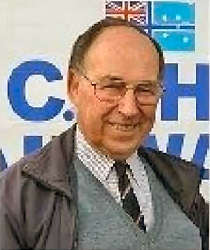
 target towing for the Lincolns. I was delighted to oblige, of course. To
be able to switch from flying a large 4 engine bomber, to haring around
the heavens in a Mustang, made me a very happy 21 year old.
target towing for the Lincolns. I was delighted to oblige, of course. To
be able to switch from flying a large 4 engine bomber, to haring around
the heavens in a Mustang, made me a very happy 21 year old.
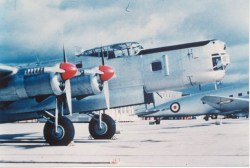 carried
on anti submarine work. Both the Lancaster and Lincoln were designed to
be flown by one pilot and I often flew the Lincoln on local flights with
just a mechanic or another crew member to help start the engines and
keep an eye outside. No specific qualification needed, just another set
of hands and eyes.
carried
on anti submarine work. Both the Lancaster and Lincoln were designed to
be flown by one pilot and I often flew the Lincoln on local flights with
just a mechanic or another crew member to help start the engines and
keep an eye outside. No specific qualification needed, just another set
of hands and eyes.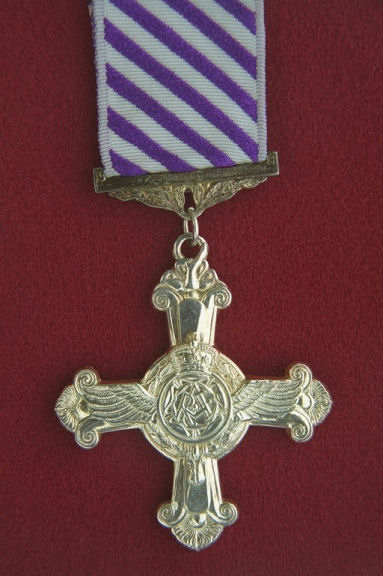


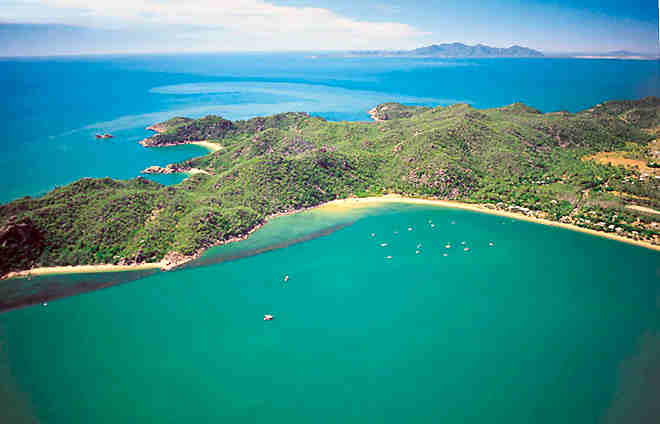
 final course for Townsville. The early Lincolns were not equipped with a
radio compass and instrument let downs were done by talk down, using
Ground Control Approach (GCA) radar, or ATC operated VHF radio direction
finding. As the aircraft was equipped with only one VHF set, the
situation could become serious if the radio failed in bad weather. En
route navigation was carried out by the specialist navigator using
various combinations of astro sextant sun or star fixes, Loran, HF/DF
and basic Deduced Reckoning. At some RAAF fields, we could home to the
station using a primitive wartime pulse radar beacon called
final course for Townsville. The early Lincolns were not equipped with a
radio compass and instrument let downs were done by talk down, using
Ground Control Approach (GCA) radar, or ATC operated VHF radio direction
finding. As the aircraft was equipped with only one VHF set, the
situation could become serious if the radio failed in bad weather. En
route navigation was carried out by the specialist navigator using
various combinations of astro sextant sun or star fixes, Loran, HF/DF
and basic Deduced Reckoning. At some RAAF fields, we could home to the
station using a primitive wartime pulse radar beacon called
